About Us - Meditation Garden
History
"Hands of God and Man" is a monumental sculptural work by Kansas native Bernard "Poco" Frazier. In 1954, the congregation of Reformation Lutheran Church commissioned Frazier to create a sculpture, "Hands of God and Man," for the exterior west wall of the sanctuary. Mr. Frazier felt that cement is closer to nature than other materials because it begins with the stone of the earth, is ground into cement by man, and restored to stone by the sculptor.
This creation was first molded in clay on the ground, then an estimated 30 tons of concrete was poured into the mold. After the concrete was set, the wall was lifted into position. It is believed that this is the only example of a concrete sculpture serving as a structural element of a building.
In 1994 the property on Kellogg was sold, the sculpture was removed from the building prior to demolition and was moved to the present location. In 1996 it was listed in the Wichita Register of Historic Places by the Wichita City Council. It remained in storage there until 1999, when it was erected as the focal center of the new Meditation Garden.
Facts: The sculpture is 16 feet wide, 34 feet tall, and is 12 inches to 24 inches thick. The total weight of the sculpture is 65,000 pounds.
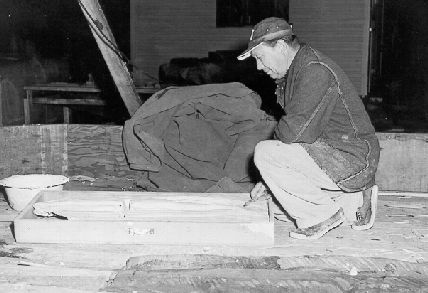
Bernard Frazier taking measurements on the model.
Artist words
His view on art and Architecture:
"Mankind forever has created symbols to mark in his mind and heart the reality of his hope for reaching higher levels of existence. There is evidence; it seems to me, that the first purpose of these symbols has most often been to foretell the courses of his spiritual progress rather than to record them afterward. Great works of art are pathways of man’s philosophies. By their unique powers of providing a focal point for his aspirations they firmly fix the concept which until then may have been fleeting and elusive."
His view on "Hands of God and Man":
"There is much symbolism in this creation. The hands may be that of a contemporary man or of the congregation. They may be the meditating hands of God or of Martin Luther. They may be the hands of fellowship or friendship. The hands mean only what the viewer sees them as, and may be interpreted by scripture, but are not meant to be positive symbolism."
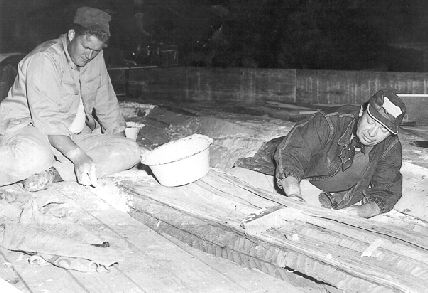
Bernard Frazier working the clay in the bottom of the concrete mold.

Close-up showing details of the sculpture.

Sculpture shown in its original location.
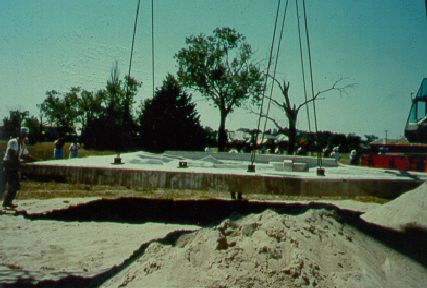
Laying the sculpture down at the current location.
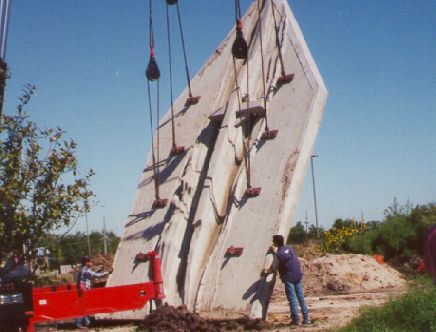
Raising the Sculpture to place in the meditation Garden.
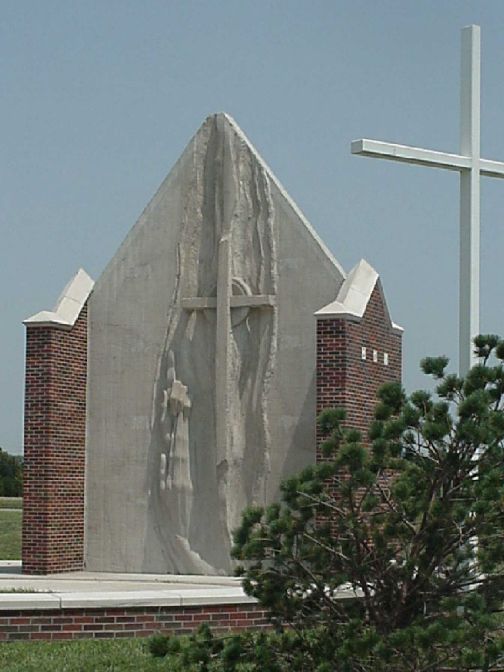
September 24, 2000
About the Artist
Bernard Frazier was born in 1906 on a farm in western Kansas near the town of Athol. It was while living on the farm that he started experimenting with native stone and clay from which he carved and molded his earlier sculptures. He got formal training while attending The University of Kansas from 1925 to 1929. He received the nickname "Poco" while running for the University of Kansas track team.
After graduation in 1929, Poco Frazier served as an apprentice in the studios of nationally prominent sculptors, Loredo Taft and Fred Torrey. Then in 1935 he returned to the University of Kansas to sculpt twelve dioramas to be placed in the Dyche Natural History Museum. These dioramas have been asserted to be among the first to use perspective and molded background in creating the illusion of distance. He served as artist in residence at K.U. from 1938 to 1940 when he was offered a regular faculty position, during which he established the first regular sculpture class.
In 1944, Mr. Frazier accepted the directorship of the Philbrook Art Center in Tulsa, Oklahoma. He resigned this position in 1950 to devote more time to his professional sculpting. It was during this time that he created "Hands of God and Man." He returned to a position of artist in residence at K.U. in 1956. In 1974, he took a year’s sabbatical to serve as visiting professor and lecturer at universities in India and Nepal. Bernard "Poco" Frazier died on May 24, 1976.
Frazier was a man of his cultural environment who was able to vividly project this culture through his art works. Each of his finished sculptures possessed his unique blending of styles that combined a dominant single concept or subject, molded or carved with just enough generality or abstractness in detail to remind viewers of similar experiences or sightings in their own past.
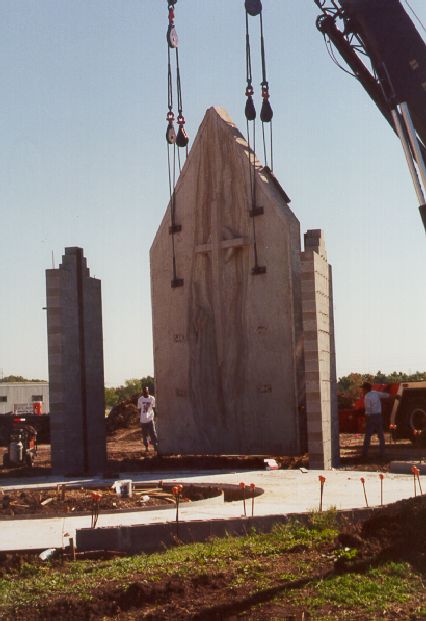
Sculpture being lifted into place.